This is my third and final post about the McGregor family. If you’d like to refresh your memory, here are the links to the first and second posts. It’s hard to know where to quit with these folks. So many of them are/were accomplished people. Doug McGregor who supplied most of the material for these posts had this to say about his grandfather and family.
“They lived through a remarkable time in that house. Spanish American War in their lifetime, World War I, the Great Depression which destroyed his bakery business, World War II.
My dad (George’s son, John) was the first to be put through college in the depths of the Depression, thanks to the generosity of a grand uncle who had several dental patents. I’ve documented all the descendants of George and Evelyn who are amazing naturalists, musicians, linguists, engineers, business people, medical professionals, and one Yale/Harvard PhD. They have spread coast-to-coast, ironically several in Boston. But, this is a typical American story.”
I can’t say how typical but my wish would be that it were. This post is about George’s first son, Willard. His life was anything but typical. It certainly was interesting. What follows is a bio written by someone in the McGregor family whose name I haven’t yet received. DH
Willard’s Bio
Willard was born in 1901 in Boston, MA. He died in New York City in 1993. With his many talents, he was often torn between the need to create visual beauty through painting and his desire to perform the world’s great music as a concert pianist. Willard painted nearly his whole life. He was first recognized as an artist when he participated in the early hectic days of the abstract expressionist movement in this country. He continued working in this style while art fashions flurried around him. The result is an astounding collection of thousands upon thousands of pieces, all dedicated to the exploration of color and composition.
Willard, who came to St. Louis as a child in 1908, attended Washington University for two years before heading to Europe in the late 1920’s “to study human nature instead.” Asked what he did during that time he said, “I was a starving artist, and I starved.” In the 1920s Willard studied piano and painted in Berlin, Paris, Vienna and Rome. During this time he was impressed with the paintings of Miro, Matisse, Picasso and others who were beginning to display work which was to eventually revolutionize painting and establish aesthetic standards for art in the modern period. He especially valued and appreciated the work of Picasso throughout this creative life.
In the early 1930’s Willard studied in Vienna with Franz Lerch, and expressionist painter of great talent. However, Willard was not strongly influenced by Lerch. He pursued a less figurative direction. His style found fulfillment during the 1940’s in abstract expressionism. He has been identified with the group of painters called the New York School of abstract Expressionism. He was acquainted with Hans Hoffman, Mark Rothko, Barnet Newman, Jackson Pollock and others.
It was during the formative years of the New York School that Willard was first involved in painting and drawing with his close friend Milton Avery. Many of his drawings and figurative watercolors picture Milton’s family—Sally, March and their small dog, Picasso, on the coast of Maine. In 1949 Willard arranged for the Averys to stay in a cottage owned by friends and located at Pemmaquid Point.
In New York City many sketching sessions were spent with Avery and another good friend, Grace Hartigan, drawing the human figure. The 1984 edition of Burt Chernow’s “The Drawings of Milton Avery” contains this description of the period in a foreword by Sally Avery: ” . . . there were weekly sketch classes that continued throughout Milton’s life. These moved about . . . first in our house when March was small and we couldn’t leave her. Then later at the Muse’s. After drawing the model in his studio for three hours, we gathered around the piano in his living room and listened as Ike played his guitar and sang old ballads. A favorite was “My Name is Sam Hall and I Hate You One and All.” We all joined in the chorus while Willard MacGregor accompanied on the piano.” Willard introduced Sally to a favorite medium of his, oil paintstick on paper. His own oil stick works were usually small in scale and displayed a wonderful color sense.
Other friends from these early days included the contemporary portrait artist, John Kock, and Chicago abstract artist, “Martyle.” There were many friends who became collectors of his work, including Mr. and Mrs. Gene Tunney and Mr. and Mrs. James Rorimer (a former Director of the Metropolitan Museum in New York City) and James’ sister, Mrs. Louise Dushkin.
Although Willard was a talented figurative artist, he was primarily an abstract painter. (For many years he was associated with New York’s Fleishman Gallery.) His unique color sense occasionally hints at Avery, but the association is only slight since Willard’s work has been generally more abstract and his line, when it appears, is more expressive than that of Avery. Willard’s abstract paintings display a unique ability to communicate through unusual selection and combination of color. The use of zinc white in fluid combination with other colors creates very subtle passage in some paintings.
Many of Willard’s paintings have distinctly lyrical quality. Others are dark and brooding. Many of those with dark color fields contain surrealistic personal symbols executed in brighter hues which come forward to confront the viewer.
Willard especially prized his large abstracts, which is no surprise considering their sense of freedom and their unique color juxtaposition. “Free” is a MacGregor touch word. He used it where other said “beautiful.” He has pursued the “free” so long now, often suited up in his characteristic bikini and beret, that the MacGregor oeuvre may well be recognized someday as work on a major scale.
Willard described what he sought to express in his work as, “a dance of colors’ evocations of nature rather than direct representation; poetry, rhythms, space, variety of texture; emotional states and moods expressed with created and imagined shapes.” Willard said, “Joy, violence, sorrow, serenity . . . all can be expressed through color, space and rhythm. Whether abstract, representation, or realistic, the important things are poetry, passion, and intensity of temperament. Art does not hold up a mirror to nature photographically, but reflects, evokes and transforms nature through an endless variety of temperaments.”
Willard was not necessarily bound to abstract art. He created many realistic paintings too, including landscapes, nudes, people, and portraits of such art and music-world notables as Milton Avery, Paul Hindemith, Igor Stravinsky, and Sir Thomas Beecham. He also did many self portraits.
His exhibitions have toured places such as St. Croix, New York, Chicago, St. Louis, Maine and Bordeaux, France.
While Willard has drawn such grand and exotic works as “The Church of the Navigator” and “Black Widow and Children,” he also has drawn hundreds of “street people” sketches. Some of his most enjoyable subjects are young people who came into the McDonald’s in New York City where he ate breakfast every morning. He said he found himself recording their radical dress and hairstyles down on napkins.
Numerous painting dear to his heart are of the Maine coastline. Other sketches humorously portray life in New York City and activities in Central Park. Willard’s landscapes, which are executed primarily in either acrylic or gouache, represent some of his favorite locations from painting in Portugal, Greece and Turkey.
In a newspaper interview Willard said, “The world around me is one of fascination. My eyes are always opened to the inexhaustible beauties of nature and the ugliness objectively. But what comes out on my canvas is subjective, inspired by nature, but somehow or other transformed in the subconscious and in the imagination.”
“My music and painting will never get me a Rolls Royce, “MacGregor said without regret.
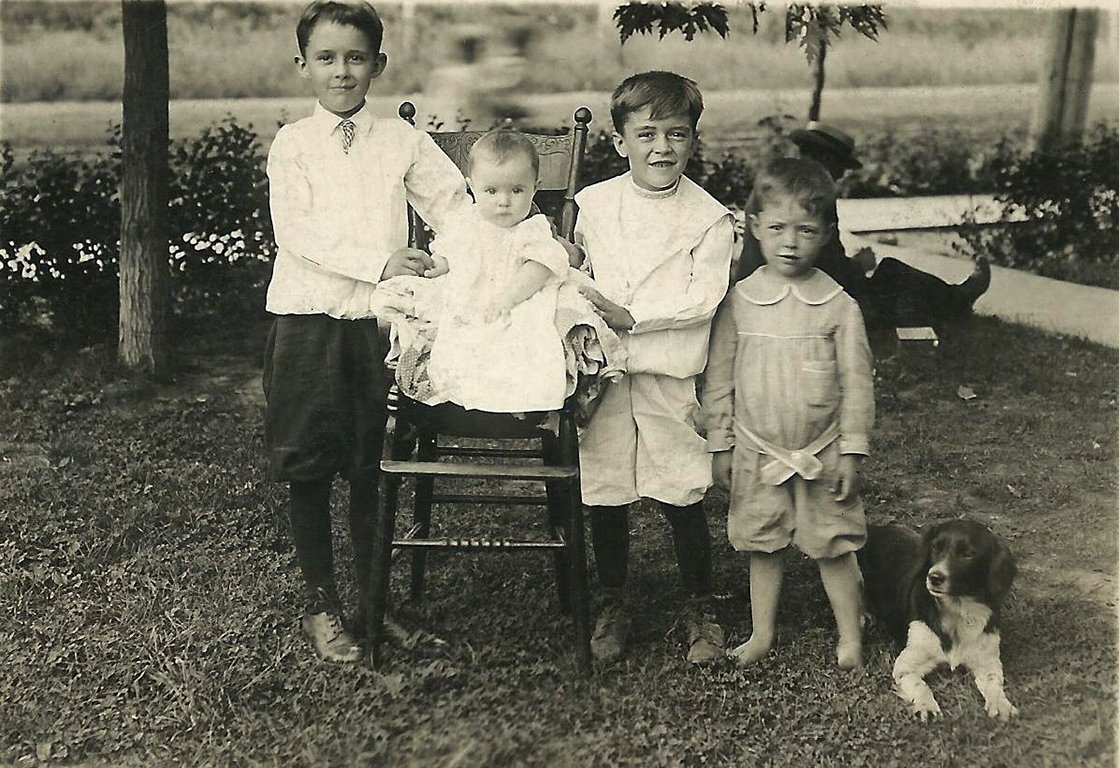

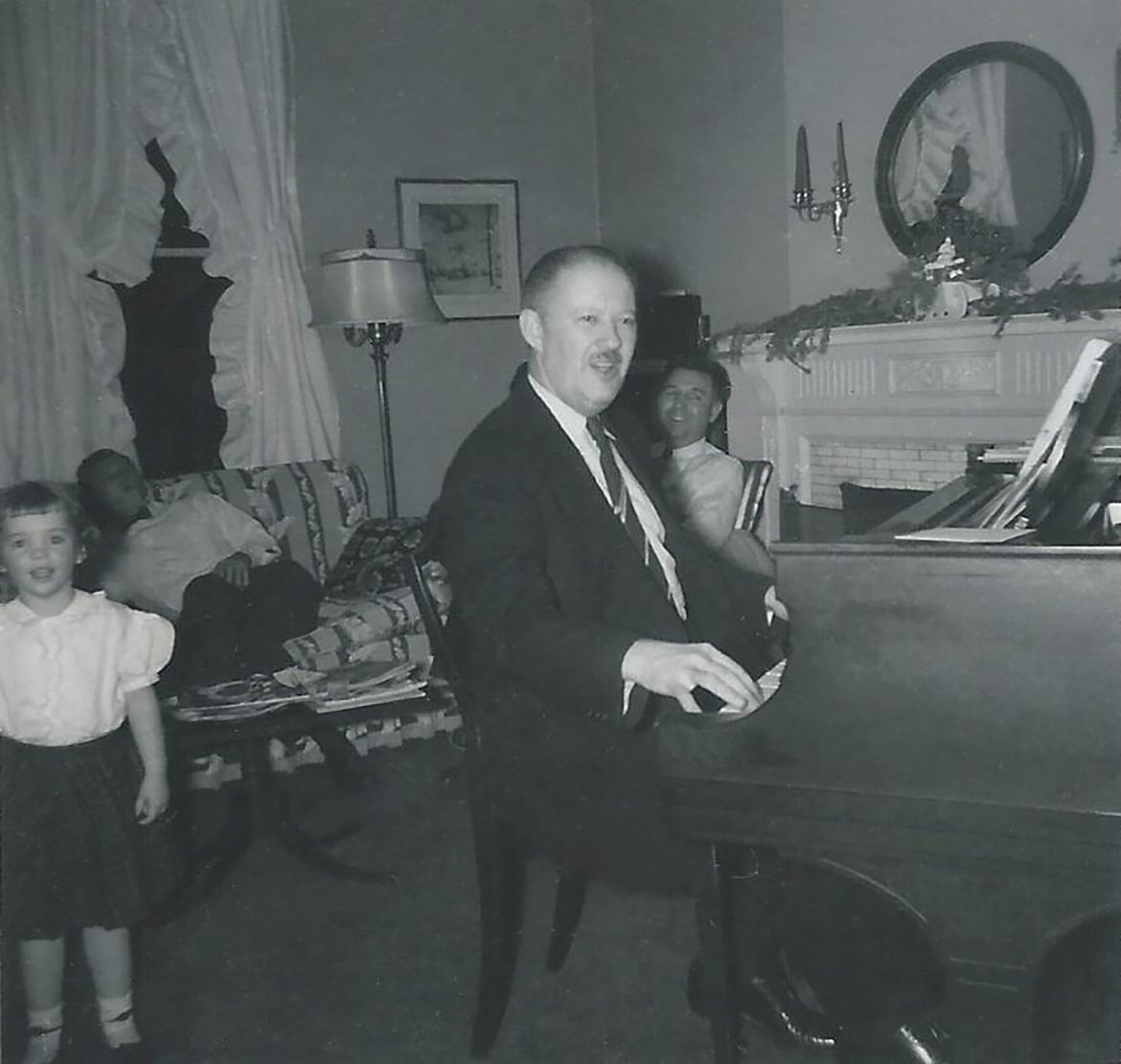
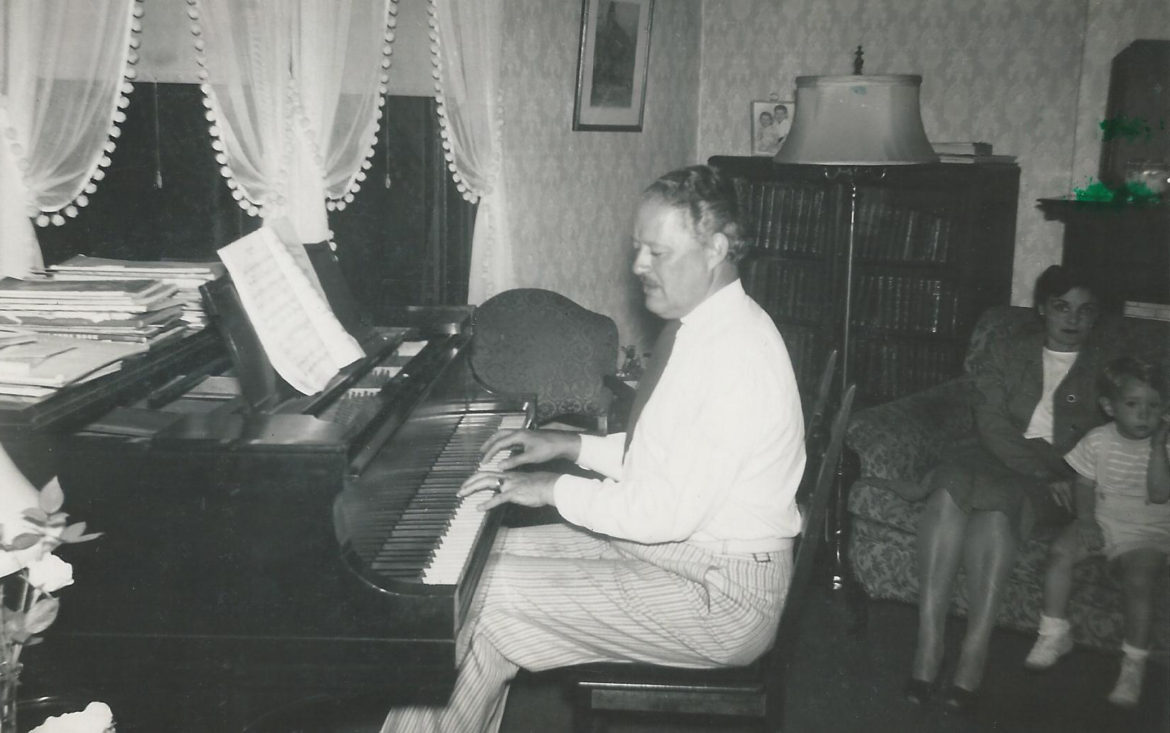
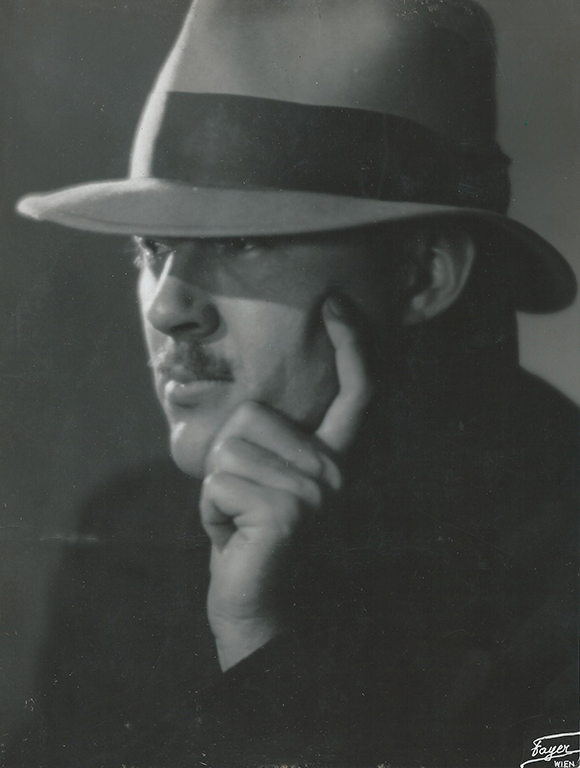
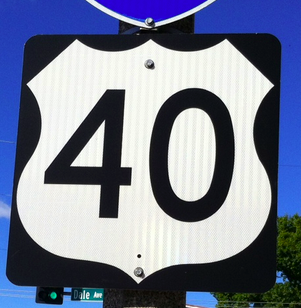
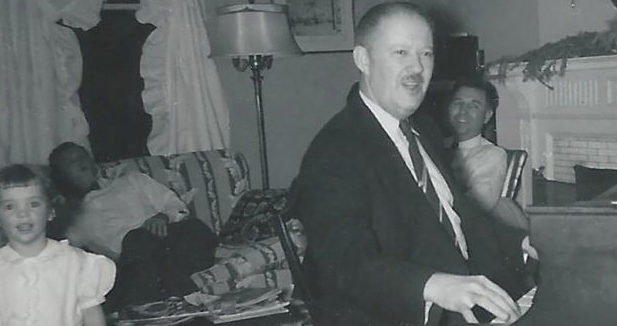
Thank you so much for this article! We recently moved into the Flora House last summer. I brought my family piano from my parents’ which is in the front living room…and now have inspiration after reading this story. These pictures are amazing, showing the same woodwork and architectural details that are still present. It is great to see the artistic legacy from the McGregor family.
The ginko tree remains majestic in our front yard. This house has such an amazing aura.
Bob
Bob, How interesting to give a date to your majestic ginkgo tree. We, as neighbors, have enjoyed that tree for the nearly 35 years that we have been here. It’s a real gem!
Another musical connection in Maplewood, along with the Kennedy’s–
Who would have thought we had a guy playing with the New York Symphony and being a famous painter. Time for a listing of famous Maplewood folks. Maybe we need a walk of fame with stars in the sidewalk or plaques on walls around town. Probably some other folks out there. I am guessing a little research would turn up more about him. Love these kind of stories.
I grew up on the south side of Flora between Big Bend and Sutton from 1944-1962. Three doors east was a lady who had lived there for many, many years and was there a long time after I left. She was a very nice lady and I wonder if anyone else remembers her. Her name was Virginia Love.
Well we’ll find out, Don. Thanks for your comment.
Thank you for including my Uncle in your book. I was the first Grandchild in the McGregor family, and remember Willard playing piano at Grandma’s house and mine when we lived in Kirkwood. We also had him come to Kirksville, Mo to have a concert at the college . I have several of his paintings, early landscapes and abstracts. My Dad was George, and he admired his big brother. He and my Mother attended his guest appearance with the New York Symphony Orchestra, and the story told is that he made a mistake when he started to play and had to begin over-most humiliating. One fond memory I have is Willard sitting down at our old player piano and playing through my Sister and my piano lesson book of boogie woogie-he left us with many good memories.
You are very welcome, Jean. I appreciate you McGregors adding detail to this story. Willard certainly must have been a lot of fun.
I am the twin brother of Doug McGregor, we are sons of Willard’s youngest brother, John. Willard also loved to play tennis when he was in his teens. He and his brother George somehow made it up from the house at Flora to the courts in Forest Park.
I remember ever year Willard came to St. Louis for about two weeks around Christmas and also in the summer. Willard spent much of the time spending nights at our house and the other time with aunt Evelyn back at the Flora house. The days of his visits were filled with drawing, water colors, and other visual expressions of art. Then late in the afternoon happy hour would begin and last for a few hours before transitioning to dinner and then hours of playing the piano which included my mother and sisters (when my sisters were in town), accompanying Willard in duets. I began taking lessons in my late 20s (early in the 1980s), and after several years felt worthy to begin joining in on the duet playing with Willard during his visits the last few years of his life. Those are very fond memories. My wife, Denice Lordo McGregor, grew up in St. Louis Hills and we lived near Francis Park for several years before job relocations sent us all over the United States. As it turns out my wife and son and I now live near the shoreline in Connecticut, perhaps influenced by those countless paintings of shorelines that we studied over the years of Willard’s. Our daughter lives in Boston very near where Willard lived. My most vivid memory of those days at the Flora house are chasing my brother Doug up and down the “secret staircase” that lead from the upstairs to the kitchen. I can’t leave without mentioning that we loved playing on the beautiful Ginko tree in the front yard. Thank you for these articles of the McGregor family.
It is my pleasure, Don. Your wife was a Lordo? I worked for a fellow by that name at Dazor Mfg. in 1965. Any relation? It was probably the first real job I ever had albeit thankfully only a summer one.
Comments are closed.